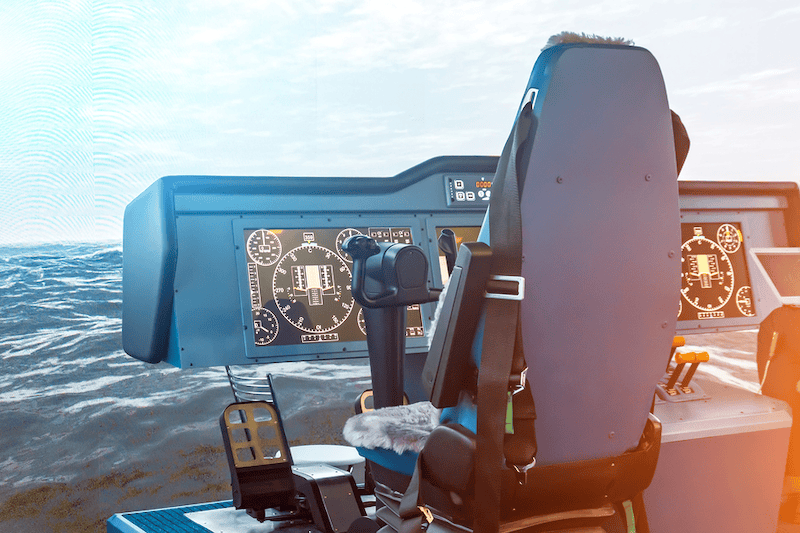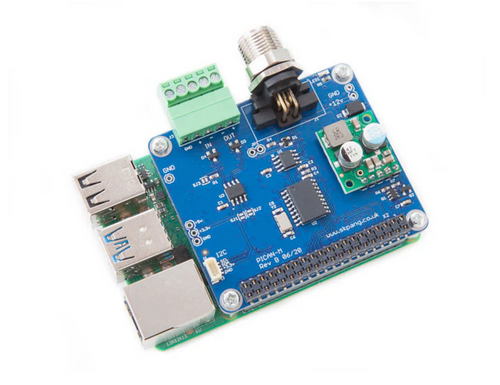Blog
Recent Posts
Embedded Systems Development for NMEA 2000
Posted by on
 Embedded systems development for the NMEA 2000 (National Marine Electronics Association) protocol presents unique challenges and opportunities in the field of marine electronics. NMEA 2000 is a standardized communication protocol designed to enable robust and reliable data exchange among marine instruments and devices. This essay explores the fundamental aspects of developing embedded systems for NMEA 2000, including its architecture, design considerations, challenges, and applications.
Embedded systems development for the NMEA 2000 (National Marine Electronics Association) protocol presents unique challenges and opportunities in the field of marine electronics. NMEA 2000 is a standardized communication protocol designed to enable robust and reliable data exchange among marine instruments and devices. This essay explores the fundamental aspects of developing embedded systems for NMEA 2000, including its architecture, design considerations, challenges, and applications.
Overview of NMEA 2000
NMEA 2000 is a Controller Area Network (CAN)-based protocol optimized for the marine environment. It supports high-speed data transfer and ensures interoperability among various devices, such as GPS receivers, autopilots, depth sounders, and engine monitors. The protocol defines standardized message formats called Parameter Group Numbers (PGNs), which encapsulate specific types of data.
NMEA 2000's architecture relies on a bus topology, where multiple nodes connect to a single backbone cable. This simplifies wiring and reduces the weight of cabling compared to older systems like NMEA 0183. With its 250 kbps data rate and multi-transmitter capability, NMEA 2000 provides a robust framework for integrating a wide range of marine devices.
Key Components of Embedded Systems for NMEA 2000
- Microcontrollers and Processors: At the heart of any embedded system is the microcontroller, which manages communication, processing, and control. NMEA 2000-compatible systems often use microcontrollers with built-in CAN controllers, such as the STM32 or Microchip PIC series.
- CAN Transceiver: A CAN transceiver translates signals between the CAN bus and the microcontroller. It ensures proper electrical signaling and robust communication over the NMEA 2000 network.
- Firmware: The firmware implements the NMEA 2000 protocol stack, including CAN message handling, PGN parsing, and data exchange logic. It ensures compatibility with the protocol’s specifications.
- Connectors and Cabling: NMEA 2000 requires specific connectors and cabling to meet marine standards for reliability and durability under harsh conditions.
Design Considerations
- Compliance with Standards: Developing NMEA 2000 devices mandates strict adherence to NMEA’s protocol specifications, including electrical, mechanical, and software requirements.
- Power Efficiency: Embedded systems in marine environments often operate on limited power sources. Efficient power management is crucial to ensure device reliability and longevity.
- Environmental Durability: Marine systems must withstand extreme conditions, including high humidity, saltwater exposure, and temperature fluctuations. Hardware design should incorporate waterproofing, corrosion resistance, and rugged enclosures.
- Interoperability: NMEA 2000 aims to enable seamless communication between devices from different manufacturers. Testing for compatibility is essential to ensure proper functionality within diverse system configurations.
- Real-Time Performance: Marine applications demand real-time data processing for critical functions such as navigation and engine monitoring. Embedded systems must prioritize low latency and high reliability.
Challenges in NMEA 2000 Development
- Licensing and Certification: NMEA 2000 development requires certification and licensing from the National Marine Electronics Association, which involves rigorous testing and compliance checks.
- Complex Protocol Implementation: Implementing the NMEA 2000 stack, including PGN handling and network management, requires a deep understanding of the protocol.
- Debugging and Diagnostics: Diagnosing issues on a CAN-based network can be challenging due to its distributed nature. Developers often rely on specialized tools like CAN analyzers and protocol simulators.
- Resource Constraints: Embedded systems operate under strict resource constraints, including limited memory and processing power, necessitating efficient code optimization.
Applications of NMEA 2000 Embedded Systems
- Navigation Systems: GPS receivers and chartplotters use NMEA 2000 to share location and route data with other onboard devices.
- Engine Monitoring: NMEA 2000 enables real-time monitoring of engine parameters such as RPM, temperature, and fuel consumption, facilitating predictive maintenance.
- Autopilot Systems: Autopilot devices use NMEA 2000 to receive heading and navigation data, enabling precise vessel control.
- Environmental Sensors: Weather stations and depth sounders use the protocol to provide critical data for safe navigation and decision-making.
- Entertainment and Lighting: NMEA 2000 integration extends to non-critical systems, such as audio-visual equipment and lighting, enhancing onboard comfort and convenience.
Future Prospects
As marine technology continues to evolve, the role of NMEA 2000 in embedded systems development will expand. Emerging trends such as the Internet of Things (IoT) and machine learning offer opportunities for enhancing data analytics, automation, and remote monitoring in marine systems. Furthermore, advancements in hardware and software tools will simplify the development process, making NMEA 2000 accessible to a broader range of developers.
In conclusion, embedded systems development for NMEA 2000 is a dynamic and technically demanding field. By addressing its unique challenges and leveraging its robust framework, developers can create innovative solutions that enhance the safety, efficiency, and enjoyment of marine activities.
 PICAN-M - NMEA 0183 & NMEA 2000 HAT For Raspberry Pi
PICAN-M - NMEA 0183 & NMEA 2000 HAT For Raspberry Pi
The PICAN-M (M = Marine) is a Raspberry Pi HAT with NMEA 0183 and NMEA 2000 connections. The NMEA 0183 (RS422) port is accessible via a 5-way screw terminal.
The NMEA 2000 port is accessible via a Micro-C connector.
Please be aware that this board cannot be powered via the NMEA 2000 connection because it lacks an onboard power supply. However, a version with a power supply (SMPS) is available.
ESP32 Processor: CAN Bus Topology and Termination Resistors
This post is an excerpt from our application note Controller Area Network (CAN) Development with ESP32. It is my experience that newcomers to the technology overlook the importance of termination resistors. Missing or misplaced resistors can lead to transmission errors or even prevent transmission altogether. The general rule is that if you connect to an existing, fully [...]
Raspberry Pi Pico CAN Bus System with Micro-Python Installed
The Raspberry Pi PicoBoard is an inexpensive and versatile development board designed for the RP2040 microcontroller chip developed by Raspberry Pi. It features an RP2040 microcontroller chip with 2MB of Flash, and a micro-USB port for power, data, and programming. The 40-pin dip-style header provides 26 multi-function 3.3V GPIO, 23 digital-only GPIO, and three ADC-compatible [...]
CANFDuino: Upgrading the Hardware to 24 VDC Power Supply
Today, we are addressing a frequently asked question since the product's launch: 'Is it possible to power CANFDuino off of 12 or 24 V power?'. Our previous response, 'Yes, using the prototyping space to add a regulator', while accurate, may not have been as helpful as we intended. To provide a more practical solution, we [...]
Automotive Development Module has CAN FD, LIN, Ethernet Port
Renesas has launched a software development board featuring the R-Car S4 System-on-Chip (SoC). The scope of delivery includes the Whitebox SDK open-source software. The R-Car S4 facilitates the launch of Car Server/CoGW with high performance, high-speed networking, high security, and high functional safety levels required as E/E architectures grow into domains and zones. The R-Car S4 solution [...]
Know OBD2 Before You Start That Development Project
We at Copperhill Technologies offer a variety of CAN (Controller Area Network) devices for developing automotive and industrial embedded systems. In that capacity, we receive frequent inquiries regarding OBD2 (Onboard Diagnostics). OBD2, or Onboard Diagnostics Second Generation, is a vehicle diagnosis system found in modern cars and trucks. The OBD2 system collects data from sensors and [...]
Arduino-Compatible Microsoft Azure Certified IoT Development Kit with Visual Studio Code Support
This Microsoft Azure Certified IoT DevKit (IOT-AZ3166) is an all-in-one kit optimized for prototyping and developing Internet of Things (IoT) applications leveraging Microsoft Azure services. It supplies an Arduino-compatible board with multiple peripherals such as an OLED display, sensors, hardware debugging chip (ST-Link), and security chip. The project collection offers creative examples for learning and reference, plus [...]
Miniature Embedded Cortex-M7 Module for IIot Applications Supports up to Three CAN FD Ports
TQ announced their TQMa117xL system-on-chip (SOC) module to develop space-saving and energy-efficient control systems. The board supports up to three CAN FD interfaces.The module uses the power of the NXP i.MX RT1170 MCU. It comes a compact size of 31 mm x 31 mm (1.2 " x 1.2") and supplies all CPU signals via a total [...]
Fast-Boot Your Raspberry Pi 3 Linux In Under Two seconds
Raspberry Pi enthusiasts are looking for a way to fast boot a Raspberry Pi mini-PC. They may be interested in a new project available via Github. The project describes the fast booting of a Raspberry Pi 32 Linux in under two seconds. Check out the video link below to demonstrate how quickly you can [...]
Computer On Module With NXP i.MX 8M Mini CPU Supports Two CAN FD Ports, FreeRTOS, Linux
F&S Elektronik Systeme extended their product line of Picocore modules, which integrate up to two CAN (FD) Bus interfaces.The Picocore MX8M module utilizes the NXP i.MX 8M Mini CPU with one, two, or four ARM Cortex-A53 cores operating at 1.8 GHz plus a Cortex-M4 processor for real-time processing at 400 MHz. The boards use an adapted [...]
 Loading... Please wait...
Loading... Please wait...
